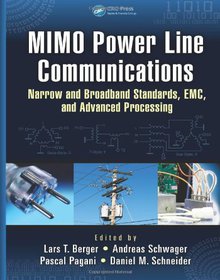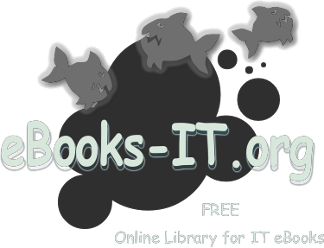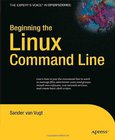MIMO Power Line Communications
Narrow and Broadband Standards, EMC, and Advanced Processing

Book Details:
| Publisher: | CRC Press |
| Series: | CRC Press |
| Author: | Lars Torsten Berger |
| Edition: | 1 |
| ISBN-10: | 1466557524 |
| ISBN-13: | 9781466557529 |
| Pages: | 710 |
| Published: | Feb 18 2014 |
| Posted: | Nov 19 2014 |
| Language: | English |
| Book format: | |
| Book size: | 27.5 MB |
Book Description:
One of the first publications of its kind in the exciting field of multiple input multiple output (MIMO) power line communications (PLC), MIMO Power Line Communications: Narrow and Broadband Standards, EMC, and Advanced Processing contains contributions from experts in industry and academia, making it practical enough to provide a solid understanding of how PLC technologies work, yet scientific enough to form a base for ongoing RD activities. This book is subdivided into five thematic parts. Part I looks at narrow- and broadband channel characterization based on measurements from around the globe. Taking into account current regulations and electromagnetic compatibility (EMC), part II describes MIMO signal processing strategies and related capacity and throughput estimates. Current narrow- and broadband PLC standards and specifications are described in the various chapters of part III. Advanced PLC processing options are treated in part IV, drawing from a wide variety of research areas such as beamforming/precoding, time reversal, multi-user processing, and relaying. Lastly, part V contains case studies and field trials, where the advanced technologies of tomorrow are put into practice today. Suitable as a reference or a handbook, MIMO Power Line Communications: Narrow and Broadband Standards, EMC, and Advanced Processing features self-contained chapters with extensive cross-referencing to allow for a flexible reading path.
Download Link:
Related Books:
MIMO System Technology for Wireless Communications
For broadband communications, it was frequency division multiplexing. For optical communications, it was wavelength division multiplexing. Then, for all types of networks it was code division. Breakthroughs in transmission speed were made possible by these developments, heralding next-generation networks of increasing capability in each case. The basic idea is the same: more channels equals higher throughput. For wireless communications, it is space-time coding using multiple-input-multiple-output (MIMO) technology.Providing a complete treatment of MIMO under a single cover, MIMO System Technology for Wireless Communications assembles coverage on all aspects of MIMO technology along with up-to-date information on key related issues. Contributors from...
Beginning Power BI with Excel 2013
Self-Service Business Intelligence Using Power Pivot, Power View, Power Query and Power Map
Understanding your company's data has never been easier than with Microsoft's new Power BI package for Excel 2013. Consisting of four powerful tools-Power Pivot, Power View, Power Query and Power Maps-Power BI makes self-service business intelligence a reality for a wide range of users, bridging the traditional gap between Excel users, business analysts and IT experts and making it easier for everyone to work together to build the data models that can give you game-changing insights into your business.Beginning Power BI with Excel 2013 guides you step by step through the process of analyzing and visualizing your data. Daniel R. Clark, an expert in BI training and a regular speaker on these topics, takes you through each tool in turn, using hands-on a...
Beginning the Linux Command Line
This is Linux for those of us who dont mind typing. All Linux users and administrators tend to like the flexibility and speed of Linux administration from the command line in bytesized chunks, instead of fairly standard graphical user interfaces. Beginning the Linux Command Line follows a taskoriented approach and is distribution-agnostic. Work with files and directories. Administer users and security. Understand how Linux is organized. What youll learn Finding help from insystem resources Finding the right command for the task you have to accomplish Working with text editors and intelligent filters Shell programming Managing partitions and file systems Configuring access to hardware devices Who this book is for Everyone who uses Linux. ...
2007 - 2021 © eBooks-IT.org



